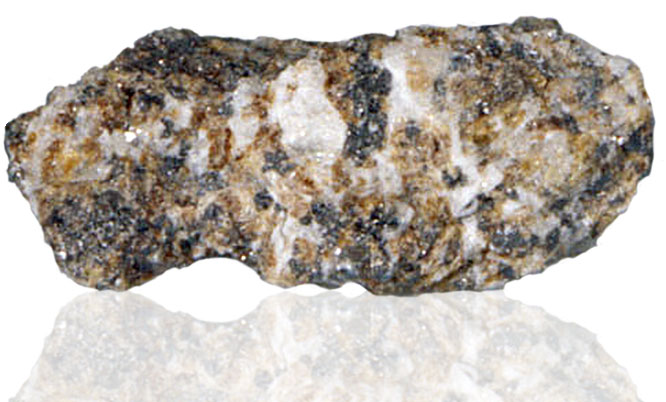
Fact sheet
70157 is a medium grey, sub- to intergranular basalt with one miarolitic cavity that was collected from a basaltic boulder named the "Geophone Rock". It is a plagioclase-poikilitic basalt. Anhedral and blocky ilmenite forms an intersertal texture with pyroxene and plagioclase feldspar. Ilmenite contains rutile and spinel exsolution lamellae. Armalcolite is present as ilmenite-free inclusions in pyroxene. Olivine forms small inclusions in pyroxene and plagioclase (rotation 1). Metallic iron and troilite are interstitial phases. No discrete spinel minerals are present. Olivine exhibits moderate variation, although individual grains are usually homogeneous. Plagioclase shows little zoning or inter-grain variation (An 84-89). Pyroxene compositions exhibit little Fe enrichment, although there is a continuum of compositions between titanaugite and pigeonite.
The sample weighed 0.57 grams before analysis and has not been dated.
Further details of this and other Apollo samples are here: http://curator.jsc.nasa.gov/lunar/
Apollo 17, the final manned landing mission, had two objectives: to obtain samples of ancient rocks from the lunar highlands and to look for evidence of younger volcanic activity on the valley floor.
This small Collection contains material deriving from both periods, including igneous rocks around 4.3 billion years old from the lunar highlands as well as younger volcanic samples dating from about 3.6 billion years ago.
Apollo 17 was launched on 7 December 1972.






